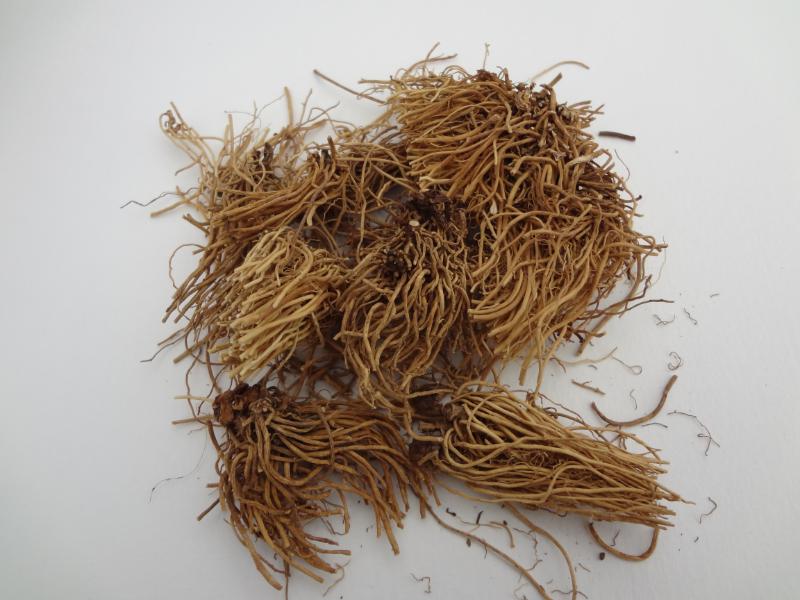Search in medicinals
Asari Rhizoma et Radix
Asarum
细辛 〔細辛〕 xì xīn

Alternate Chinese names: 小辛 xiǎo xīn; 少辛 shào xīn
Kingdom: Plant
Origin in PRC Pharmacopoeia: Asarum heterotropoides Fr. Schmidt var. mandshuricum (Maxim.) Kitag.; Asarum sieboldii Miq. var. seoulense Nakai; Asarum sieboldii Miq. (PRC Pharmacopoeia)
Origin in unofficial sources: Asarum heterotropoides Fr. Schmidt var. mandshuricum (Maxim.) Kitag.*; Asarum sieboldii Miq. var. seoulense Nakai*; Asarum forbesii Maxim.; Asarum maximum Hemsl.; Asarum geophilum Hemsl.; Asarum caudigerum Hance; Asarum himalaicum Hook. f. et Thoms.; Asarum caulescens Maxim.; Asarum longiflorum C.Y. Cheng et C.S. Yang; Asarum insigne Diels; Asarum longepedunculatum O.C. Schmidt; Asarum longepedunculatum O.C. Schmidt; Asarum sieboldii Miq.*
Use: Medicinal
Category: Exterior-resolving agents / Warm acrid exterior-resolving agents
Properties: Acrid; warm; mildly toxic.
Channel entry: Lung, kidney, and heart channels.
Actions and indications:
- Dispels wind and disperses cold: Wind-cold patterns of common cold; externally contracted disease with yáng vacuity.
- Relieves pain: Headache, deep-source nasal congestion, toothache, and impediment pain.
- Warms the lung and transforms rheum: Cold phlegm and collecting rheum with qì counterflow, panting, and cough.
- Opens the orifices: Malignity stroke and phlegm reversal.
Dosage and method: Oral: 0.9–3g in decoctions. Topical: Grind to a powder and sprinkle on the affected area or use as nasal insufflation; decoct as a mouthwash.
Warnings: Xì xīn contains aristolochic acid and has therefore been banned for internal consumption in the United States. It is sold in the US for external use only. Xì xīn is traditionally an important medicinal in Chinese medicine, and it is still used internally in China and Taiwan.
Product description: The dried plant consists of up to three grayish-green shriveled cordate leaves mounted on long petioles. The rhizome is an irregular cylindrical shape, 1–4 cm long, 2–3 mm thick, sometimes with branches. Numerous yellowish-brown cylindrical roots, 5–10 cm long, and 1 mm thick, with short branches spring from the lower side of the rhizome. The plant is cut into 1–3 cm lengths. The decocting pieces are sections 1–3 cm in length, appearing white on the cut edge. Note that while formerly the whole herb was used, now only the underground parts are used, the aerial parts containing aristolochic acid, which is nephrotoxic. Hence, the Latin pharmaceutical term is now Asari Rhizoma et Radix rather than Asari Herba.
Quality: Large leaves and absence of earth are signs of good quality.
Production area: Liáoníng, Jílín, and less importantly Shǎnxī (Shaanxi) and Gānsū.
Etymology: The name xì xīn 细辛, literally thin acrid,
reflects the fineness of this plant's roots and its pungent flavor.